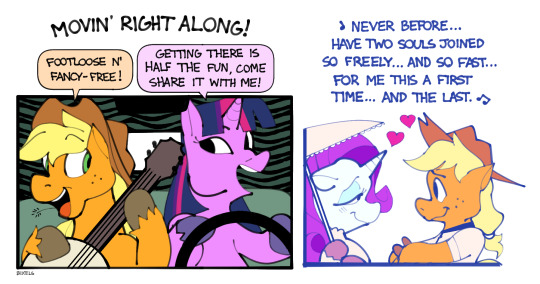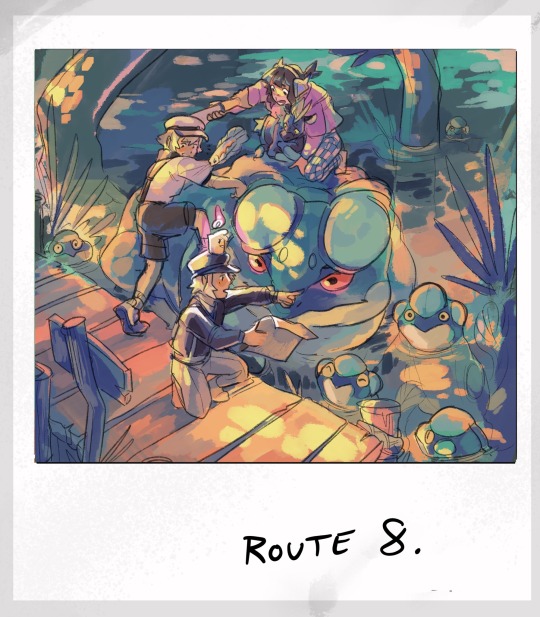#modern humans
Text
45,000-year-old bones unearthed in cave are oldest modern-human remains in Central Europe

Modern humans crossed the Alps into chilly Northern Europe about 45,000 years ago, meaning they may have coexisted with Neanderthals in Europe for thousands of years longer than experts previously thought, according to new research.
The discovery — of 13 bone fragments belonging to Homo sapiens who occupied a cave in Germany between about 44,000 and 47,500 years ago — catalogs the oldest known H. sapiens remains from Central and Northwest Europe, the researchers said. The finding also surprised the team because, as they found, the climate in the region was frigid at that time.
"This shows that even these earlier groups of Homo sapiens dispersing across Eurasia already had some capacity to adapt to such harsh climatic conditions," Read more.
343 notes
·
View notes
Text
According to scientists the interbreeding with ancient Denisovans led to a slight variation in zinc regulation resulting in modern day mental health issues.
#DNA#genome#Homo sapiens#Denisovans#mental health#depression#modern humans#ancient#history#ancient origins
56 notes
·
View notes
Text
The interesting question is what caused these rapid increases in brain size, driving hominin intelligence from the chimpanzee-like capabilities of Australopithecus to modern humans in only a few million years.

"Human Universe" - Professor Brian Cox and Andrew Cohen
#book quote#human universe#brian cox#andrew cohen#nonfiction#brain#brain development#intelligence#hominin#chimpanzee#australopithecus#modern humans#human evolution#evolutionary history
3 notes
·
View notes
Text
Guys, we finally get the Annunaki episode!!!!
youtube
IT'S BEEN 84 YEARS!!!
AJ delivers!!
And it's SO GOOD!!
I LOVE IT!!
#The Why Files#Annunaki#creators of man#science fiction#Modern humans#origin theory#YEEEEEEAAAAAAAAHHHH!#We were bred by the Annunaki to be slaves.#They stand 12' - 15' tall#We're the little guys#Humans are stubborn#Youtube
0 notes
Text
The Marathon Gene: Mutation May Explain Why Modern Humans Can Go the Distance
Two to 3 million years ago, humans lost the use of a gene called CMAH. Around the same time, our species seemed to have developed an increased capacity for endurance running.
— By Brittany Flaherty | Published: Tuesday, April 2, 2019

A recent study suggests that losing the CMAH gene and Neu5Gc sugar might have given ancient humans an endurance running boost, potentially explaining why we're capable of running long distances today. Image credit: Wikimedia Commons
When Eliud Kipchoge of Kenya crossed the finish line at the Berlin Marathon in September 2018, he smashed the world record with a time of 2 hours 1 minute 39 seconds. Just a few days before Kipchoge’s win, scientists identified a new factor that might have contributed to humankind’s capacity for endurance: the long-ago loss of a gene called CMAH.
Studies suggest that a mutation caused humans to lose function of the CMAH gene two to three million years ago—around the same time humans seem to have developed an increased capacity for endurance running. Since CMAH is involved in making a sugar called Neu5Gc, humans, unlike most other mammals, no longer have this sugar. Building on previous work led by study author Ajit Varki, a physician-scientist at the University of California San Diego, a new study suggests that losing the CMAH gene and Neu5Gc sugar might have given ancient humans an endurance running boost. These findings appeared in September 2018 in the journal Proceedings of the Royal Society B.
To learn more about CMAH function, the study’s first author, Jonathan Okerblom, a biomedical researcher at UCSD, and his colleagues engineered mice that did not express the gene and tested their exercise capacity and musculature. Mice in which CMAH expression was blocked ran at higher speeds and took on longer distances compared to mice who still expressed the gene, indicating improved endurance.
“They started running like 18 kilometers in a night,” Okerblom says of the mice in which CMAH was blocked. This was about 20 percent farther than the mice who still expressed CMAH.
Ellen Breen, a UCSD physiologist involved in this work, also examined the muscles of mice that didn’t express CMAH. She found that their hind limb muscles showed a greater resistance to fatigue and had more blood vessels. The team also observed changes in major metabolic pathways in these mice. Together, Okerblom says, their results suggest that loss of CMAH and the Neu5Gc sugar in mice may improve their muscles’ capacity for oxygen use—perhaps by changing how oxygen enters cells. If these results extend to humans, the loss of CMAH could help explain why humans became capable of running long distances.
“If you follow the evolutionary lineage of humans, the loss of CMAH is a clear genetic difference between humans and our closest genetic relatives: chimpanzees,” Okerblom says. To Okerblom and his colleagues, this difference suggested that CMAH loss could be linked to changes that set humans apart from their primate relatives.
Daniel Lieberman, Chair of the Department of Human Evolutionary Biology at Harvard University, who was not involved in the study, calls it “terrific,” and says the work builds on the anatomical and physiological evidence he previously presented to suggest that humans evolved to run long distances.
“The one thing that was not available at the time [of his previous research] was any evidence of genes that were selected that gave us this capability,” Lieberman says. “This is exactly what we were looking for.”
In addition to endurance, Okerblom and his colleagues are exploring other ways in which CMAH loss might have affected our ancient ancestors. Some evidence suggests that loss of CMAH function might have altered immune and metabolic activity—particularly in terms of susceptibility to inflammation and diseases like diabetes and cancer.
If this connection to inflammation and disease is confirmed, then losing CMAH and becoming better endurance runners might have come “at an interesting cost,” Lieberman says. “We evolved to run in order to hunt for meat, but this genetic change also likely made us subject to inflammation when we ate meat. So there’s this interesting tradeoff because running is healthy but eating meat is not...but both probably helped our ancestors have big brains and survive.”
According to the evolutionary scenario Lieberman and others have described, endurance running played a crucial role as humans began consuming meat around 2 to 3 million years ago. They say that certain physiological changes linked to endurance—like large glute muscles and springy tendons—may have evolved around this time, allowing humans to become better long-distance hunters or scavengers. Before humans developed weapons, their ability to wear prey down over long distances might have made up for their lack of size, strength, and speed.
But not everyone agrees. “These scenarios are based on essentially one story about human evolution,” says Jeffrey Schwartz, a physical anthropologist at the University of Pittsburgh, who was not involved in the study. “It’s not as simple as people make it out to be.” Given the complexity of human evolutionary history, he says, it’s very difficult to draw conclusions about which genetic changes are connected to certain adaptations.
One thing most scientists can agree on is that humans are largely unimpressive physical performers within the animal kingdom. No matter how hard we hit the gym, we are not especially fast or powerful compared to many other animals. Aside, of course, from our one truly impressive physical feat, which is best observed on the sidelines of a marathon: an extraordinary ability to run long distances.
“Michael Phelps would get destroyed by a dolphin,” Okerblom says. “But only a handful of animals could outrun us in the marathon. When it comes to endurance, humans are exceptional.”
1 note
·
View note
Text

my three weed smoking girlfriends (non-human version)
#wanted to draw them as modern day humans#slayzel#bg3#baldur’s gate 3#baldur's gate iii#shadowheart#lae'zel#karlach#my art
16K notes
·
View notes
Text



Modern! Sukuna, except he's in his original Heian Human form :> He wants to fight Gojo but Tengen forbids it for some bullshit sorcery reason, hence they can co-exist in the same reality now >:D
#ryomen sukuna#sukuna#jjk sukuna#gojo satoru#satoru gojo#itadori yuuji#yuji itadori#jjk gojo satoru#jjk yuuji#jujutsu kaisen#jjk#jujutsu kaisen fan art#jjk fan art#fan art#my art#king of curses#modern AU#jujutsu sorcerer sukuna#human sukuna
6K notes
·
View notes
Text

they would’ve run the PTA like the navy
#the all human modern au we needed#tvc#iwtv#louis de pointe du lac#vampires#interview with the vampire#lestat de lioncourt#claudia#the vampire chronicles#loustat#claudia de pointe du lac#iwtv s2
5K notes
·
View notes
Text


I watched the original Muppets movies recently.
#mlp#muppets#it's important to note this wouldn't be regular mlp equestria. no these horses would be in modern day america#everyone else would be live action humans#they would be like. hybrid 2d cartoons driving real cars and talking to guest star celebs#everyone else is like those damn horses... and pinkie goes waka waka or something#twilight sparkle#spike#celestia#luna#applejack#rarity#my art#fanart#comic
7K notes
·
View notes
Text
quotes by Victorians about the 1920s view of their generation's women
"We are frequently told that the Victorian woman...generally behaved like a pampered and neurotic infant. This is all moonshine. I do not think that I ever saw a woman faint before I came to London in 1869, and not often after then...they enjoyed a hearty laugh, and a good many of them a contest of wits with any man." -Nineteenth Century, a Monthly Review, 1927 (written by a man born in 1850)
"What queer ideas the girl of 1929 has about the Victorian period- they are not a bit true...Marriage was by no means the end and aim of our existence. Oxford and Cambridge claimed quite a few of us after school days were over. We had great ideas about 'life' and what it all might mean to us." -St. Petersburg Times, 1929 (written by a woman born in 1853)
"True, debutantes were chaperoned at balls. But that fact did not prevent them from dancing as frequently as they chose with their favorite partners. The idea that girls in the Victorian era spent their days sewing seams and practicing scales is another fallacy." -Gettysburg Times, July 1, 1927 (quote from the Dowager Lady Raglan, Ethel Jemima Somerset, who lived from 1857 to 1940)
#history#when they were still alive to defend themselves#maybe- much as I rag on modern historical fiction -we've gotten a bit closer to the truth than our grandparents did#see this is one reason I love studying the Victorian era (besides hoarding their detritus like a dragon I mean what)#it just is One Of The Eras Of All Time in pop culture#and it means so much to so many people that getting to the real human bottom of it fascinates me#spoiler: it boils down to 'people were people and always have been'
10K notes
·
View notes
Text
Sometimes I think about how the entire history of the advancement of human weapons can be boiled down to: “we found more elaborate ways to hit things with rocks…”
Spears? Sharpened rocks.
Slingshot? Ranged rocks.
Arrows? Sharpened rocks with range.
Hammers/Clubs? Refined rocks.
Swords/axes? Sharpened refined rocks.
Guns? Sharpened, refined rocks, propelled by explosives…
We discovered how to make explosives, and we fine tuned that technology to better propel refined and sharpened rocks at insane distances… we are still hitting things with rocks… we just became experts in the science of hitting things with rocks… The human race is basically just a “dump everything into geology” build…
3K notes
·
View notes
Text
Scientists from Estonia claim they have located the area that it is most likely all present-day non-Africans lived for the 20,000 years that followed their migration Out of Africa, and where they mixed their genes with those of Neanderthals.
22 notes
·
View notes
Text



The kids go fishing! (The local pokemon are very helpful if bribed with the right combination of berries.)
Masterpost for more shenanigans!
#i like to think the modern pokemon world is at its core kind#humans help pokemon and pokemon help humans#coevolution!#anyways here’s more ingo as the impulse control (he’s not very good at his job being impulse control)#the kiddos catch like fifty stunfisk and two tympole#pokemon#art#sketchbook#myart#submas#fanart#pokemon ingo#pokemon emmet#pokemon elesa#sketches#artists of instagram#seismitoad#palpitoad#stunfisk#blitzle#litwick#tynamo#emmet#ingo#elesa#nimbasa trio#pokemon illustration#illustration#frog#frogs
3K notes
·
View notes
Text

I hope you aren't lonely even though they call you The Stranger
@worldsbeyondpod
#worlds beyond number#wwwo#the stranger#wwwo fanart#wbn fanart#dnd#imagined meeting the stranger on a modern road while driving#also hes less human seeming here tbh#.....i have to draw him w boots at some point like in the description#my art
873 notes
·
View notes
Text
One thing I think we’re all glossing over about Thanks to Them is the fact that Belos got hit by a car. You’re a half-millennia old 1600s New England Puritan witch hunter who addresses Hunter as a grimwalker and then calls him Caleb in the same sentence and you just charged out into a modern road and got hit with that woman’s sedan. How do you cope with that. You used to be the Emperor. You’ve been living in the woods for months. Does he think that he got hit by an extremely fast wagon. The threat that’s been menacing the protagonists since episode fucking one just got hit by a car.
#I can’t cope with this#I’m never going to forgive that his reaction to the modern human realm was foreshadowed but never completed#I am untethered and my rage knows no bounds#the owl house#toh#toh spoilers#the owl house spoilers#emperor belos#belos#philip wittebane#wig's words#thanks to them
8K notes
·
View notes
Text


#my art#claudevain#my headcanon is that mercie would genuinely love human centipede tho#so was it claude or mercies idea? who knows#all i know is that in some modern college AU claude would be pranking the HELL out of sylvain#one day sylvain WILL find out tho and seek revenge
1K notes
·
View notes